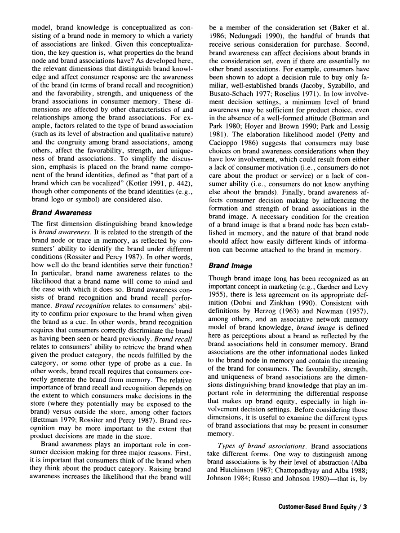The Role of Quality Inspection in Textiles
Quality inspection is a critical component in the manufacturing and supply chain of textiles. It involves inspecting finished goods for defects such as wrinkles, tears, color variations, and other irregularities that could compromise the quality of the product. The purpose of quality inspection is to ensure that the end-product meets industry standards and consumer expectations. It helps prevent waste and losses in production and can improve the reputation of the manufacturer. Quality control measures are implemented to identify and correct issues before they reach the final stage of production. This ensures that the finished products meet customer requirements and deliver value to both producers and consumers. In summary, quality inspection plays a vital role in ensuring the quality of textile products.
Introduction: Quality inspection is a crucial process in the production and distribution of textile products, ensuring that each item meets industry standards and consumer expectations. In this article, we will explore the various aspects of quality inspection in textiles and provide practical examples to illustrate its importance.

-
Understanding Quality Inspection: Quality inspection refers to the systematic examination of textile products to determine their conformity with specified standards and specifications. This process includes testing for color accuracy, uniformity, pattern fidelity, fit and wearability, as well as any additional features or characteristics required by the product.
-
The Importance of Quality Control: Quality control is integral to the success of any manufacturing process. In the textile industry, it ensures that defects are identified early in the production cycle, reducing costs associated with rework, scrap, and returns. High-quality control also helps maintain brand reputation and customer satisfaction.
-
Types of Quality Inspections: There are several types of quality inspections used in textiles, including:
a) Color Verification: This involves comparing actual samples with printed patterns to ensure accurate color reproduction. It is critical in the apparel industry where colors can be highly subjective.
b) Stitch Inspection: This checks for stitch uniformity, thread quality, and proper placement of seams and buttons. Any issues found during stitch inspection can impact the garment's durability and appearance.
c) Weave Check: This examines the integrity of the fabric's weaves and gauges. A good weave check ensures that the fabric is strong and does not show signs of unevenness or loose threads.
d) Fit Test: For clothing, fit testing is essential to ensure that garments fit comfortably and securely on customers. This may include measurements taken at different body areas, as well as fitting tests for sleeves, pockets, and other features.
e) Durability Test: These tests measure the endurance of the textile products under specific conditions, such as washing and drying, bending, and rubbing. They help ensure that products can withstand regular usage without significant degradation or damage.
-
Practical Example - Case Study: Let's take the case of a high-end fashion brand, known for its intricate embroidery and luxurious fabrics. To ensure consistent quality, they conduct regular quality inspections throughout the production process, including color verification using advanced digital printing technology. They also have a dedicated team of experts who inspect every single piece of fabric before it is woven into garments. The results of these inspections help them maintain a consistent level of quality throughout their entire supply chain.
-
Addressing Quality Issues: If quality inspections detect issues during production, manufacturers must address them promptly. This may involve reworking defective materials or scrapping them, correcting the design, or modifying the production process. It is important to communicate these findings clearly to suppliers and partners to prevent further issues from arising.
-
Advances in Technology: Advances in technology have significantly improved quality inspection in textiles. For example, machine vision technology can be used to automate some quality control processes, reducing errors and increasing efficiency. Additionally, sensor-based systems can monitor the performance of machines in real-time, alerting technicians to potential problems before they occur.
-
Challenges and Future Directions: While quality inspection plays a vital role in textile manufacturing, there are challenges associated with ensuring consistent quality across all stages of the production process. One challenge is the variability in raw material sources, which can affect the final product’s quality. To address these challenges, manufacturers may need to invest in better quality control equipment, implement stricter standards for suppliers, or adopt new technologies to enhance the quality inspection process.
-
Conclusion: In conclusion, quality inspection is an essential aspect of the textile industry, ensuring that products meet consumer expectations and maintain brand integrity. By implementing effective quality control measures, manufacturers can minimize defects and reduce waste, ultimately leading to increased profits and customer satisfaction. As technology continues to evolve, the role of quality inspection in textiles will continue to expand, requiring constant adaptation and innovation to stay ahead of the competition.
纺织品的品检概述

纺织品的品检是指对纺织品从原材料到成品的一系列质量检测过程,它不仅确保纺织品符合相关标准和法规,而且确保产品的质量和安全性,品检过程包括多个环节,包括原料检验、半成品检验、成品检验等,通过品检,可以确保纺织品的质量和性能达到预期标准,提高消费者的购物体验。
品检流程及关键环节
原料检验
原料检验是品检的第一步,主要检查原料的种类、质量、规格等,通过检查原料的来源、成分、含量等,确保原料符合纺织品的生产要求。
半成品检验
半成品检验是在原料加工过程中进行的,主要检查半成品的质量、尺寸、外观等,通过检测半成品是否符合生产工艺要求,确保半成品的质量稳定。
成品检验
成品检验是在纺织品生产完成后进行的,主要检查纺织品的质量、性能、安全性等,通过检测纺织品是否符合相关标准和法规,确保纺织品的质量和安全性,还可以对纺织品进行抽样检测,以便及时发现和解决潜在问题。
案例说明
以纺织品为例,说明品检的重要性,假设一家纺织品公司对生产的一款新型面料进行品检,在原料检验环节,该公司严格筛选原料来源,确保原料质量稳定可靠;在半成品检验环节,该公司对每个加工环节进行严格把控,确保半成品质量稳定;在成品检验环节,该公司采用先进的检测设备和技术,对纺织品进行全面检测,确保纺织品的质量和性能达到预期标准。
品检的重要性与意义
品检对于纺织品的生产和销售具有重要意义,品检可以确保纺织品的质量和性能达到预期标准,提高消费者的购物体验,品检可以防止不合格产品流入市场,保障消费者的权益,品检可以提高纺织品的附加值和市场竞争力,促进纺织行业的发展。
纺织品的品检是确保纺织品质量的重要环节,通过严格的品检流程和关键环节控制,可以确保纺织品的质量和性能达到预期标准,品检还可以提高消费者的购物体验和保障消费者的权益,在纺织品的生产和销售过程中,必须重视品检工作,加强品检力度和水平。
Articles related to the knowledge points of this article:



